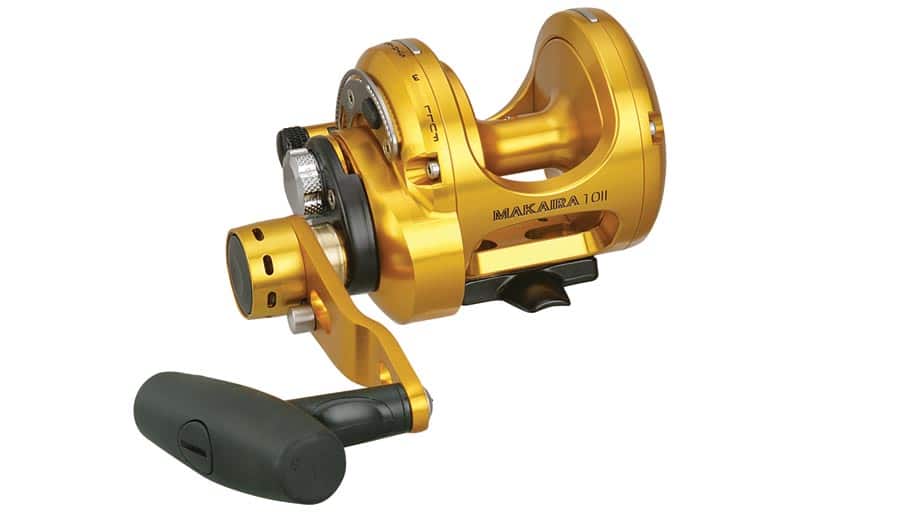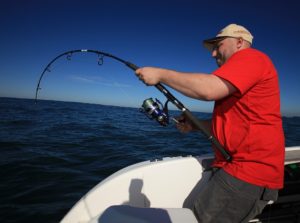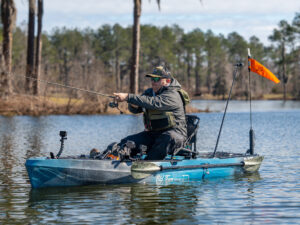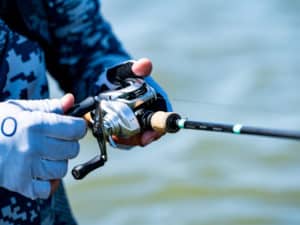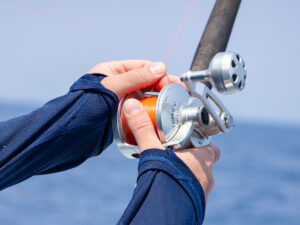When Three Dog Night sang that “one is the loneliest number” back in 1969, I doubt the classic rock band was referring to the internal workings of fishing reels. But in the world of conventional tackle, that old lyric might hold some truth — the pint-size, two-speed reel is here to stay.
No disrespect to the trusty old one-speed. For most situations, it is a perfectly adequate fishing tool. Always has been, always will be. But for decades now, saltwater anglers have been using small two-speed reels with great success. They hold an important place in an angler’s arsenal and can make you a much more effective fisherman.
Finely Tuned Machines
The concept of a two-speed reel is really quite simple — instead of utilizing a single gear set designed to retrieve line at a given speed, a two-speed offers two, generally designated as “high” and “low,” which offer anglers more fishing options.
“The versatility of a two-speed is the big attraction,” says Chris Littau, director of saltwater brands at Zebco, parent company of Fin-Nor. “You’ve got a little more weight in the two-speed because of the additional parts. But some of the newer models are really quite sleek.”
Littau is right. While Fin-Nor pioneered the development of the big-game, two-speed reel back in 1937, today’s equipment has improved by light-years and has evolved to include smaller models capable of tangling with sizable critters. What’s best about these reels is that they have only minimal disadvantages compared with similar single-speed models.
For example, Fin-Nor’s MA20II ranks as the smallest Marquesa reel offered in a two-speed configuration. Checking in at 28 ounces, it’s only 1.8 ounces heavier than the single-speed MA20.
“It’s really nothing,” Littau says, “just the weight of an extra drive gear and pinion gear, a button lever and a spline that engages one gear or the other.”
In return, anglers gain a powerful 3.1-to-1 cranking option in addition to the reel’s standard, high-speed 6.1-to-1 gear.
But what do those numbers mean anyway?
“As you turn the handle,” explains Marc Mills, regional marketing manager at Shimano, “the spool will rotate 6.1 times per every full crank of the reel handle.”
Mills is quick to point out, however, that while “everybody looks at gear ratios, inches per crank is the biggest factor. It tells how much line is being retrieved when you turn the handle.”
The inches per crank increases on reels with tall, narrow spools, a trend that emerged in small, light-line conventional reels during the past decade. Such an ergonomically designed reel basically acts as a third gear of sorts, increasing retrieval speed with spool height.
Ergonomics, in general, becomes a huge issue when considering two-speeds.
“Along with convenience and weight, it is a huge topic of discussion during every new-product launch,” says Mike Rice, senior product manager at Penn. “For instance, you always want a two-speed button to be within easy reach so you don’t have to take your hand off the handle. You want to be able to punch it with your index finger or thumb, yet maintain full control of that handle knob, and then go back and forth between high and low gears.”
But that’s just the beginning.
It’s in the Way You Use It
Indeed, there’s more to properly using a small, two-speed reel than simply toggling back and forth between gears. Experts say that to effectively use these tools requires a different mind-set than the traditional pump-and-wind method of fighting fish. But at its most basic function, a two-speed allows anglers to both rip line in quickly and battle big, tough fish with great efficiency.
“They allow an angler to put more pressure on the fish,” says Brandon Cotton, marketing and promotions manager at Okuma. “Higher speeds let the angler fish jigs and lures at a faster pace, but lower gears allow them to put more torque on a fish.”
A low gearing and slower-turning spool generates more cranking power, which can tip the odds in your favor when up against a tough customer.
“There’s a place for a two-speed and a place for a one-speed,” explains Ben Secrest, vice president of sales and marketing at Accurate Fishing Products. “There’s no need for a two-speed for white seabass. Same goes for striped marlin and sailfish. They don’t pull hard enough. You want a two-speed for a fish that goes down and stays down, like amberjack, tunas and big halibut.”
But even that logical explanation can get tricky. Say you’re latched up to a big yellowfin tuna. The way you fight that tuna may well depend on what region of the country you’re fishing.
“A lot of people on the East Coast are running smaller boats, and they can chase their fish down,” says Mills. “But on the West Coast long-range boats, you can’t do that. You truly need the extra power and torque.”
This difference led to two developments — a greater number of two-speeds in play on the West Coast and specialized fighting tactics that even anglers on the East Coast can use.
“Too many guys fight their tackle instead of fighting the fish,” says Secrest. “You can lull big fish to sleep with two-speed reels if you apply constant, even pressure. Forget pumping and reeling. Don’t be the guy that’s trying to rip the fish’s head off! You don’t want any giant jerking motions. Keep it nice and smooth.”
Secrest says the key with a small, two-speed outfit is to capitalize line gain in low gear when a big fish settles down and begins making wide, sweeping circles. He also is a huge advocate of using rails as fulcrums with a rod, when they are available.
No matter where you fish, understand this: Two-speed reels are only as good as how you use them. So learn how to use them well.
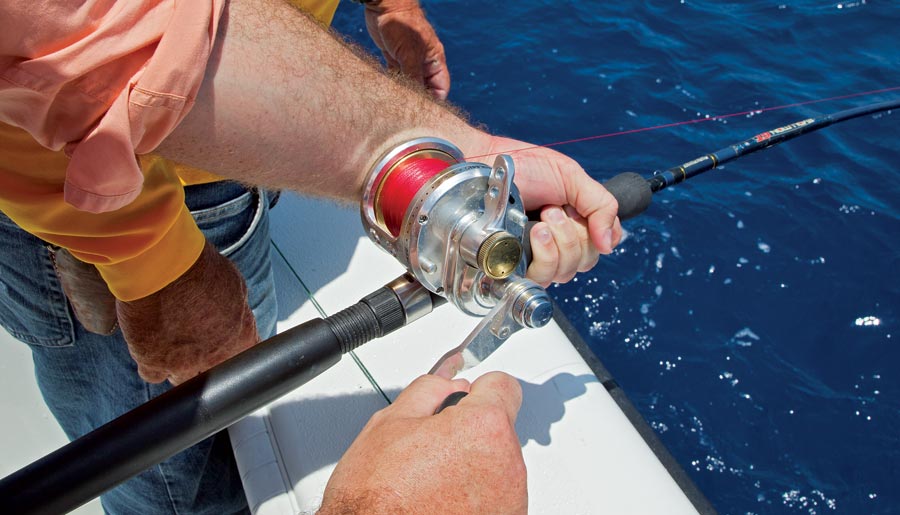
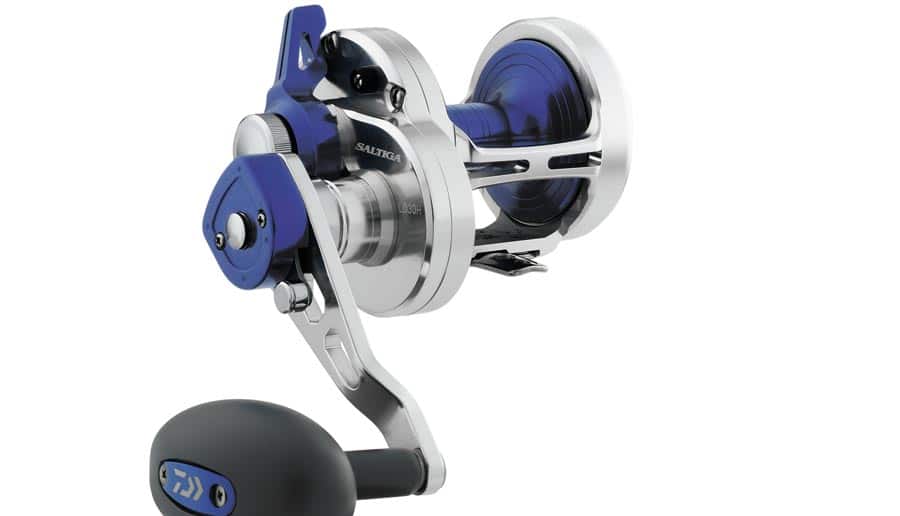
Daiwa Saltiga
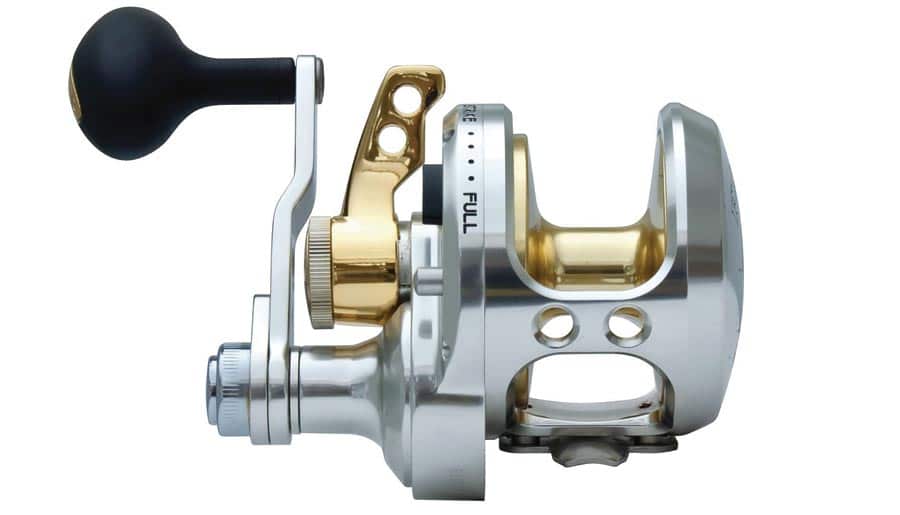
Fin-Nor MA20II
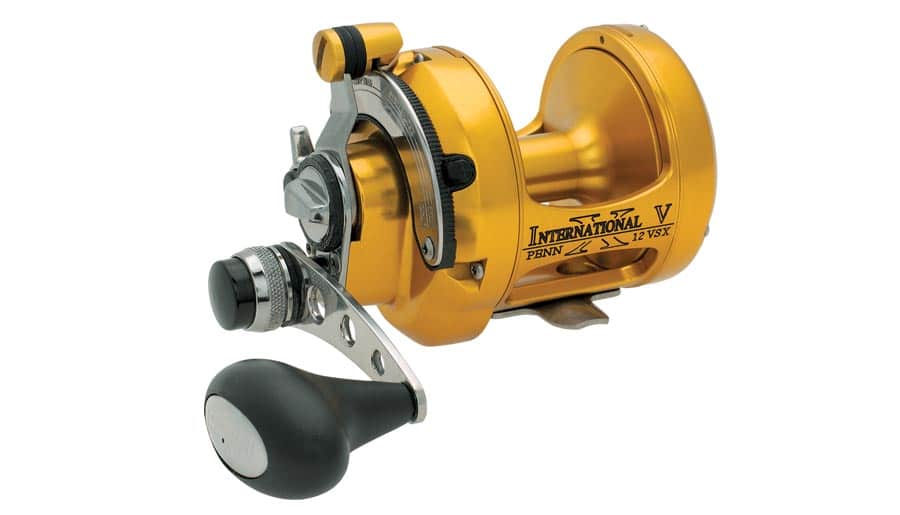
Penn 12VSX
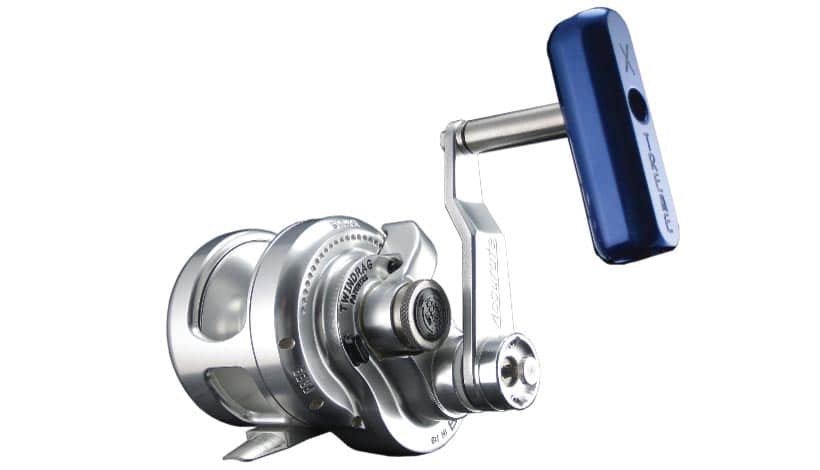
Accurate BX2-500N
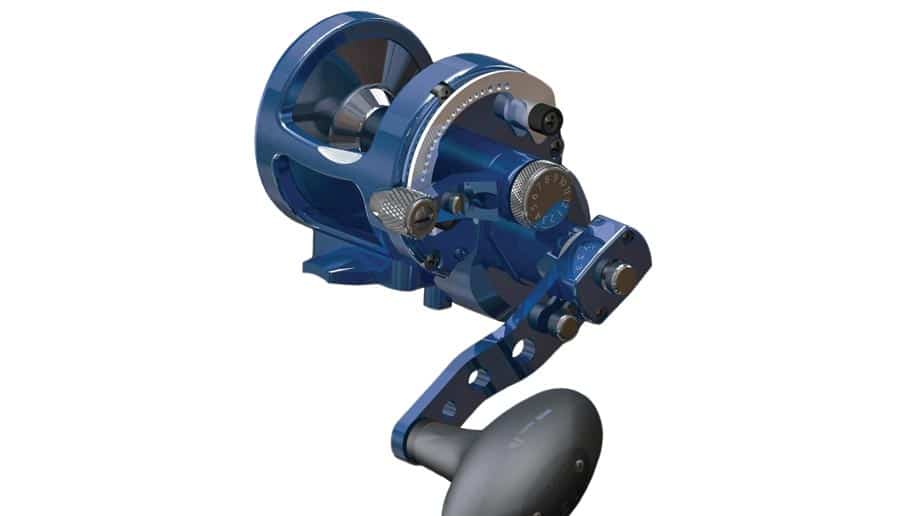
Avet SX 6/4 Raptor
